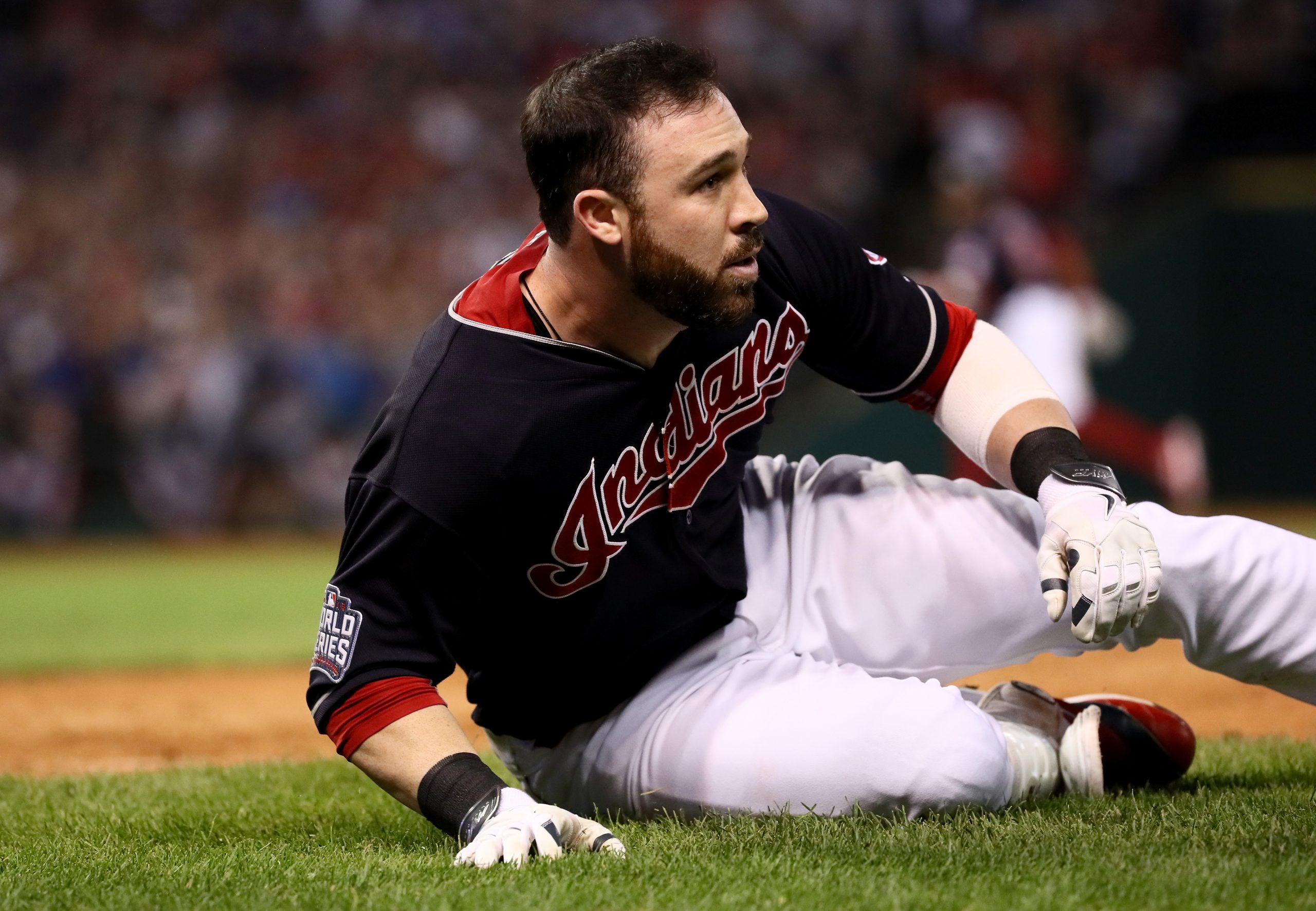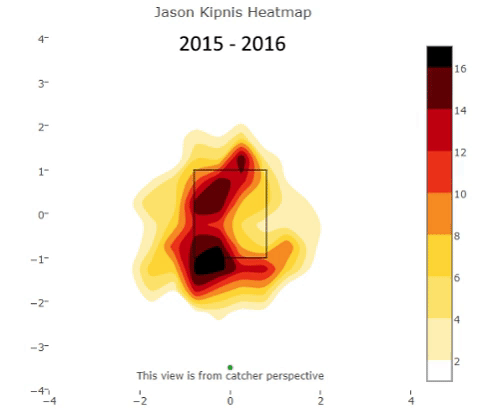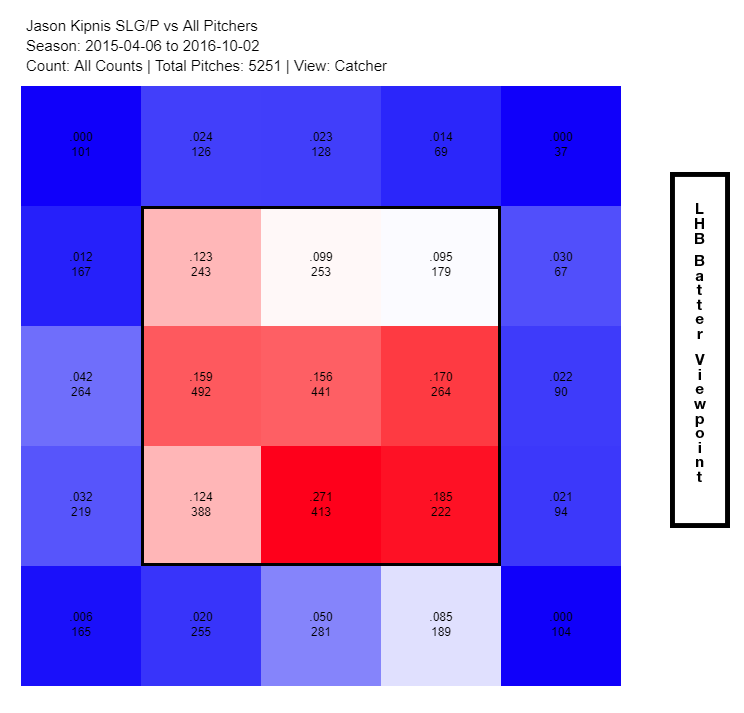Until this season, there was a general understanding of Jason Kipnis the baseball player: when healthy, Kipnis is good. In fact, he’s quite good. By WAR, Kipnis rated as the #29 position player in baseball from 2012 to 2016. In 4 of those 5 seasons, Kipnis posted between 3.4 and 5.1 WAR (where 2.5 is considered the mark for an average MLB player), and was deserving of his All-Star selections in 2013 and 2015.
Entering 2018, Kipnis’s age 31 season, the Arizona State product had only posted two sub-par years in his six seasons, and both could be directly linked to injuries. In 2014, when Kipnis could only manage a 0.7 WAR in 129 games, he dealt with a well-documented hip injury. August Fagerstrom wrote an in-depth article back in 2015 about how Kipnis’ hip trouble hurt his swing.
Kipnis struggled in 2017, and once again, injuries seemed to be at the root of the problem. Kipnis got a late start to the season, due to problems with his throwing shoulder, then pulled his hamstring in July, resulting in a DL trip, only to return in August and re-injure the same hamstring. All in all, Kipnis never got on the right track in 2017, playing in just 90 games and only tallying 0.6 WAR.
The following offseason was an interesting one for Kipnis. Reportedly, a deal to trade him to the New York Mets was nearly complete, until Mets ownership nixed the deal, due to the 2 years/$30 million owed to the second basemen. While Kipnis was surely anxious about getting traded, the Indians did little to ease his concerns, as through mid-February, they refused to tell him what position he’d be playing during the 2018 season.
Indians GM Mike Chernoff on @ESPNRadio on if Jason Kipnis will be the Indians starting 2nd baseman this year: "That's a challenging topic…"
— Aaron Goldhammer (@HammerNation19) February 11, 2018
Now 26 games into Cleveland’s season, we’re seeing something we haven’t seen before: a healthy, struggling Jason Kipnis. Perhaps “struggling” doesn’t do it justice. Kipnis is slashing a shocking .167/.248/.225, and his wRC+ of 31 (69% below league average in run creation) currently ranks as 2nd worst in baseball.
As with any baseball story, this disclaimer is required: it’s early, and Kipnis’s 114 plate appearances are not enough to make any sort of definitive judgments on his play going forward. But, no doubt, Kipnis’s woes at the plate are very concerning, considering his age, recent injury history, and the amount of time it’s been since we’ve seen the good version of Kipnis. Fair or not, Kipnis is drawing comparisons to another Cleveland Indian whose stellar career went off the rails shortly after turning 30:
Jason Kipnis last 420 ABs
.219 AVG
12 HR
40 RBI
92 H
.282 OBPNick Swisher last 420 ABs
(as a member of the #Indians).210 AVG
9 HR
45 RBI
88 H
.279 OBP— Jim Berdysz (@BirdmanCLE) April 25, 2018
So, what is ailing the former All-Star? Often, the first thing to look at is luck. Are the hits just not falling for Kipnis? If we compare Kipnis’ xwOBA (expected on-base percentage, based on launch angle and exit velocity) to his his actual wOBA, we can see if Kipnis’ results have just been unlucky.
We can say definitively say that Kipnis wasn’t unlucky in 2017, as a .010 difference is somewhat negligible. In 2018, A .067 difference is more significant…but considering his xwOBA of .273 still would only place him in the 20th percentile (261/323) of qualified hitters, it’s clear luck isn’t what’s holding Kipnis back.
So, if it isn’t luck, what specifically is ailing him at the plate? At the risk of sounding overly-simple, Kipnis’ downfall since 2017 has been caused by a decrease in contact and quality of contact.
In 2015 and 2016, Kipnis swung and missed at 7.9% of pitches. In 2017 and 2018, that number has jumped nearly 2%, to 9.7%. On top of swinging and missing more often, Kipnis is also just swinging more, period: In 2015 and 2016, Kipnis offered at 43.25% of pitches, compared to 45.5% in the past two seasons. We know this isn’t caused by pitchers throwing Kipnis more strikes, either. Per FanGraphs’ Pitch Info data, pitchers have thrown Kipnis between 49% and 50% strikes every year since 2015.
Swinging more often when you’re making less contact isn’t a good combination for any hitter. Essentially, Kipnis has been giving away more consequence-free strikes to opposing pitchers since last season.
But, let’s dive deeper into the contact issues. Below are heatmaps of Kipnis’s swings and misses in 2015-16 vs. 2017-18.
Kipnis’s swings and misses from his strong seasons in 2015 and 2016 aren’t surprising. He struggled most with low and away pitches that were borderline strikes, and had some trouble up and away as well.
Meanwhile, his heatmap for 2017 and 2018 is more concerning. Essentially, Kipnis struggled with anything on the outside part of the plate, along with having issues with pitches low and inside. The problem with this? When Kipnis has historically been his best, he feasts on low-and-inside and middle/middle-away pitches, shown in this slugging percentage-based heatmap from his 2015 and 2016 seasons:
Still, not all of Kipnis’s trouble can be traced to simply making less contact. Unfortunately, Kipnis has a quality of contact problem as well.
At the moment, Kipnis ranks 2nd to last among Cleveland hitters with an 85.4 mph average exit velocity. Simply put, he isn’t hitting the ball hard, and didn’t last year, either, with just an 85.9 mph average exit velocity.
Part of Kipnis’s problem is undoubtedly a recent trend of hitting infield fly balls. After never posting an infield fly percentage north of 6.9% before 2017, he popped-up 11.8% of his fly balls last season. Over at The Athletic, Mike Hattery went into some detail about Kipnis needing to fix this problem. Unfortunately, Kipnis’s 10.8% infield-fly percentage this season suggests it’s still a work in progress.
Entering this year, there was plenty of hope Kipnis’s issues were caused by injury, and nothing more. But, what if the injuries last season created some poor mechanical habits that he has yet to fix? What if, at age 31, Kipnis simply is losing some of the athleticism that makes him a great hitter earlier in his career.
Again: it is early, and Kipnis has plenty of time to turn the season around. However, we can see the early signs aren’t promising, and Terry Francona continuing to bat Kipnis 2nd in the lineup won’t help the Indians win any games if his current form holds.
As much as Kipnis’s lack of production will hurt the Indians on the field, the $30 million he’s owed through next season surely will limit the Indians’ financial flexibility. Instead of looking for external help to replace his production, Cleveland may be forced to look internally. In this case, they could relegate him to the bench, allowing Yandy Diaz to man third base for Cleveland, while Jose Ramirez shifted over to Kipnis’ spot at second. Regardless, for the time being, the team will have to hope their All-Star second baseman can return to form.
Add The Sports Daily to your Google News Feed!



